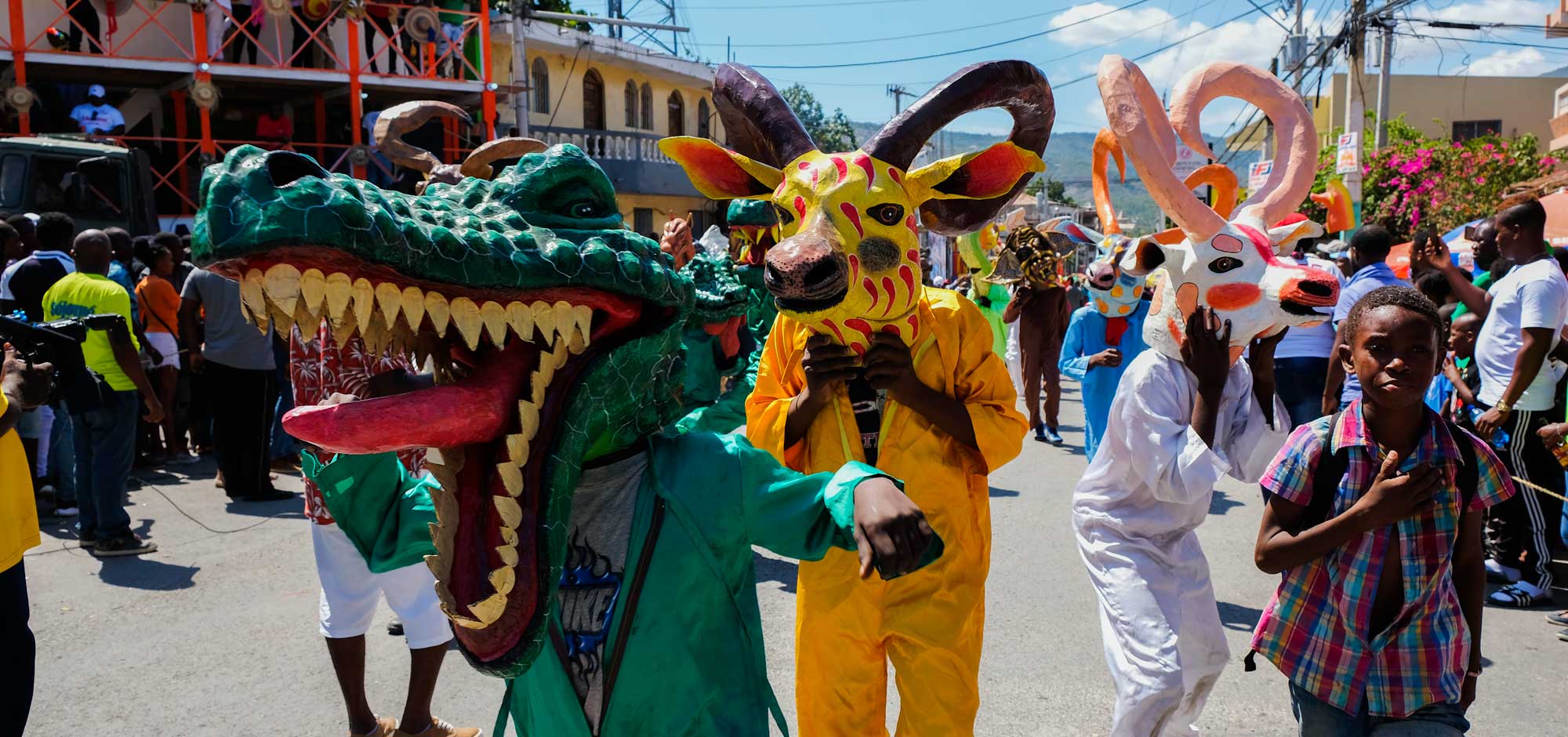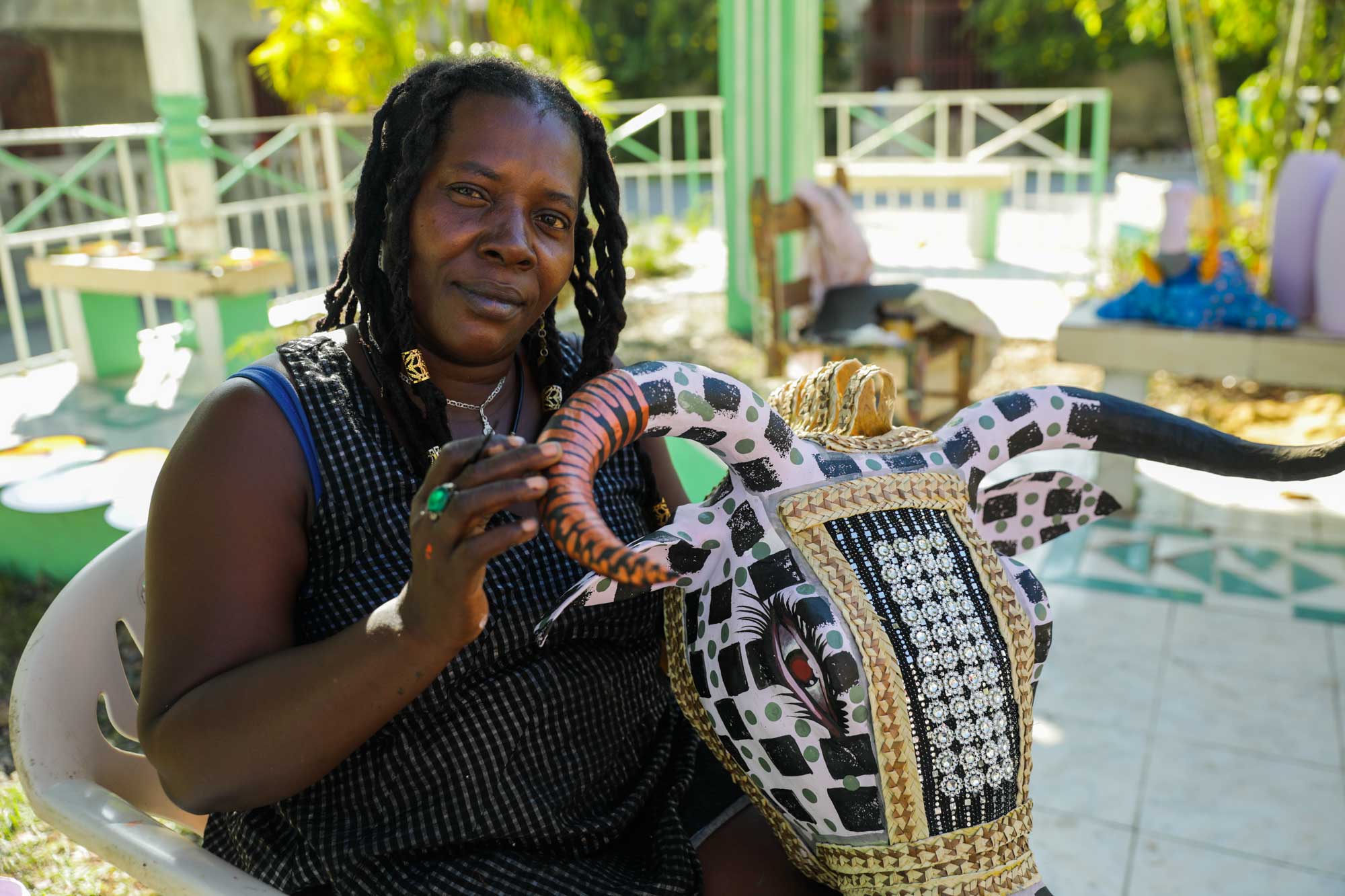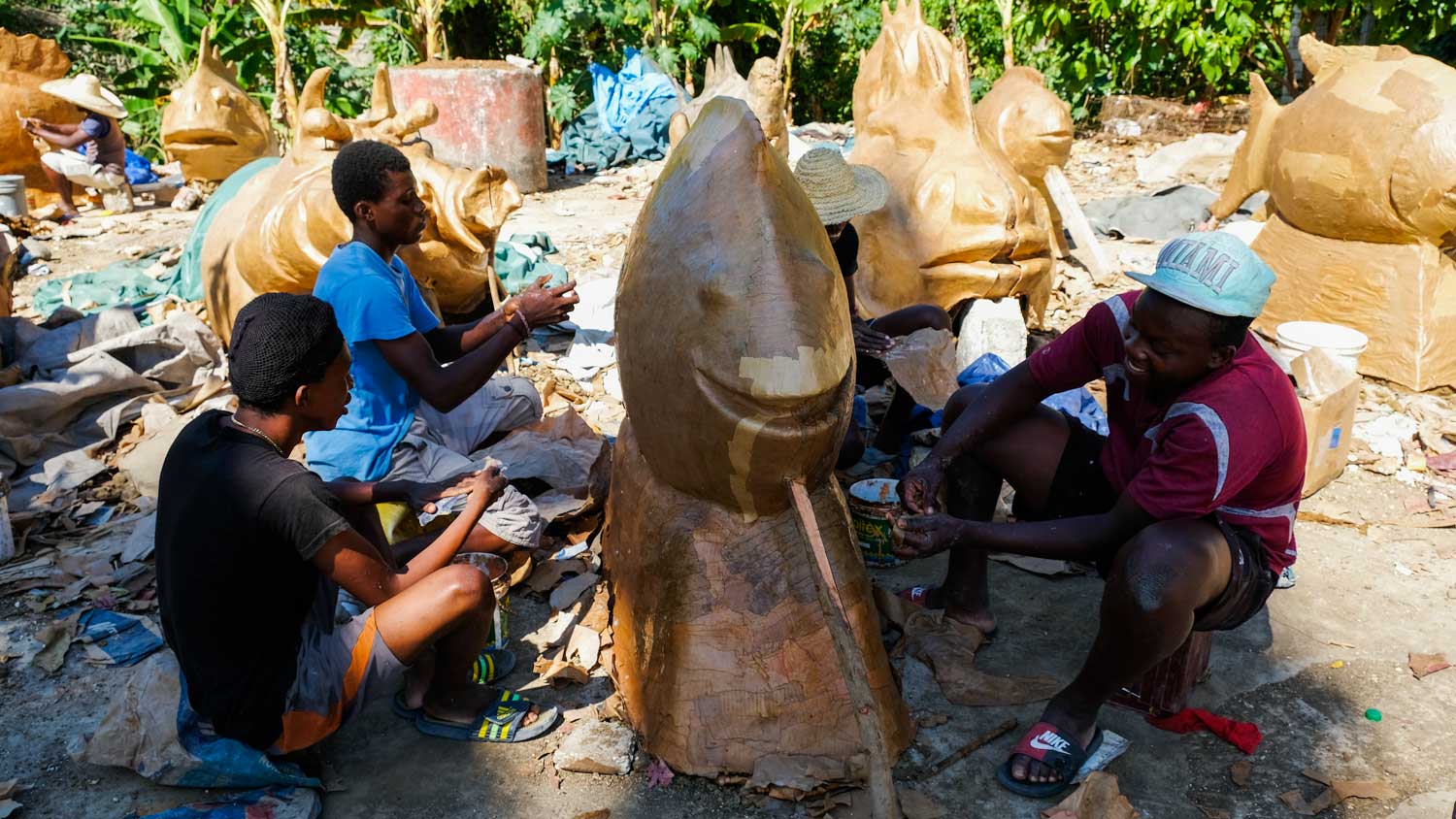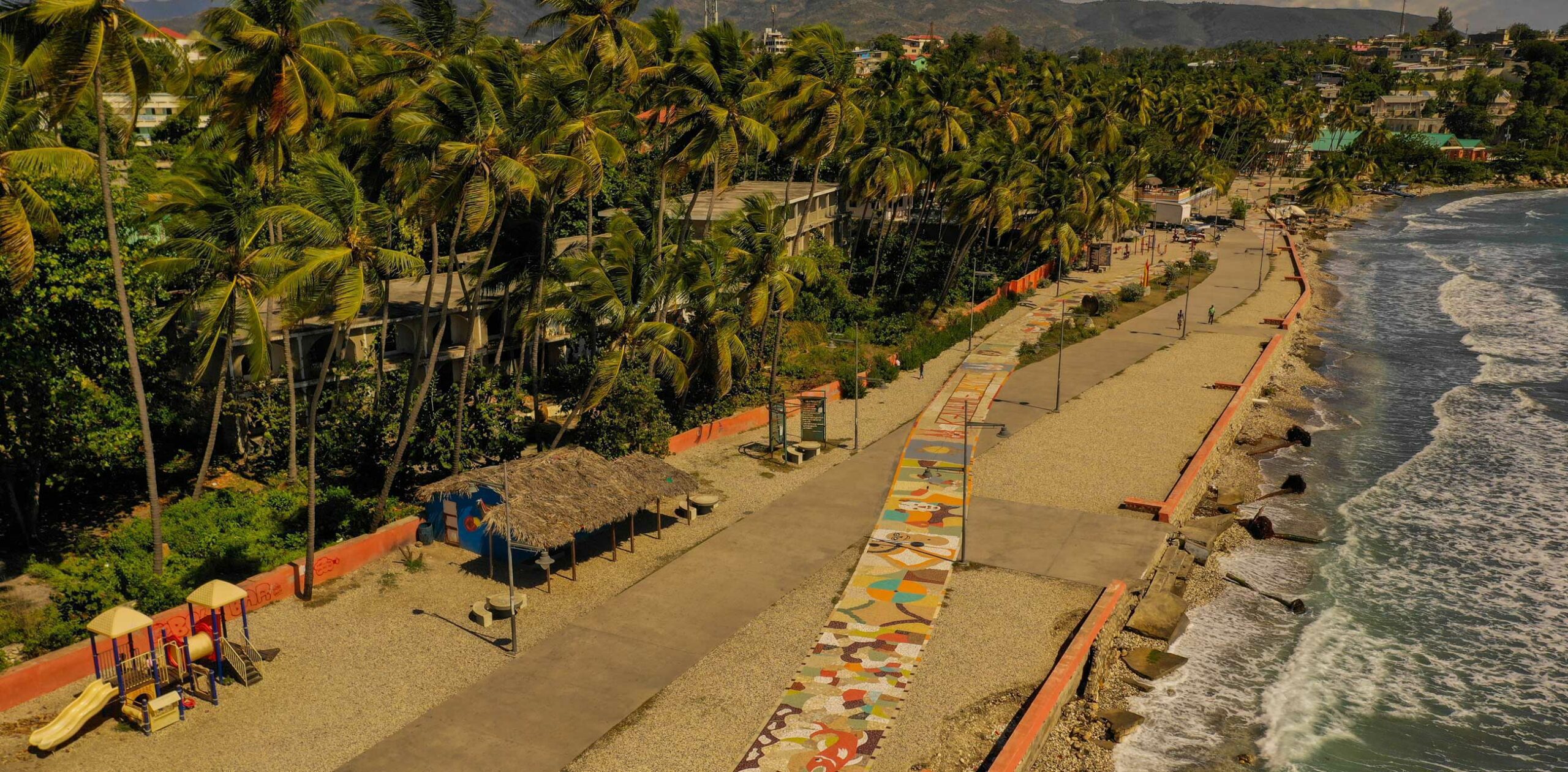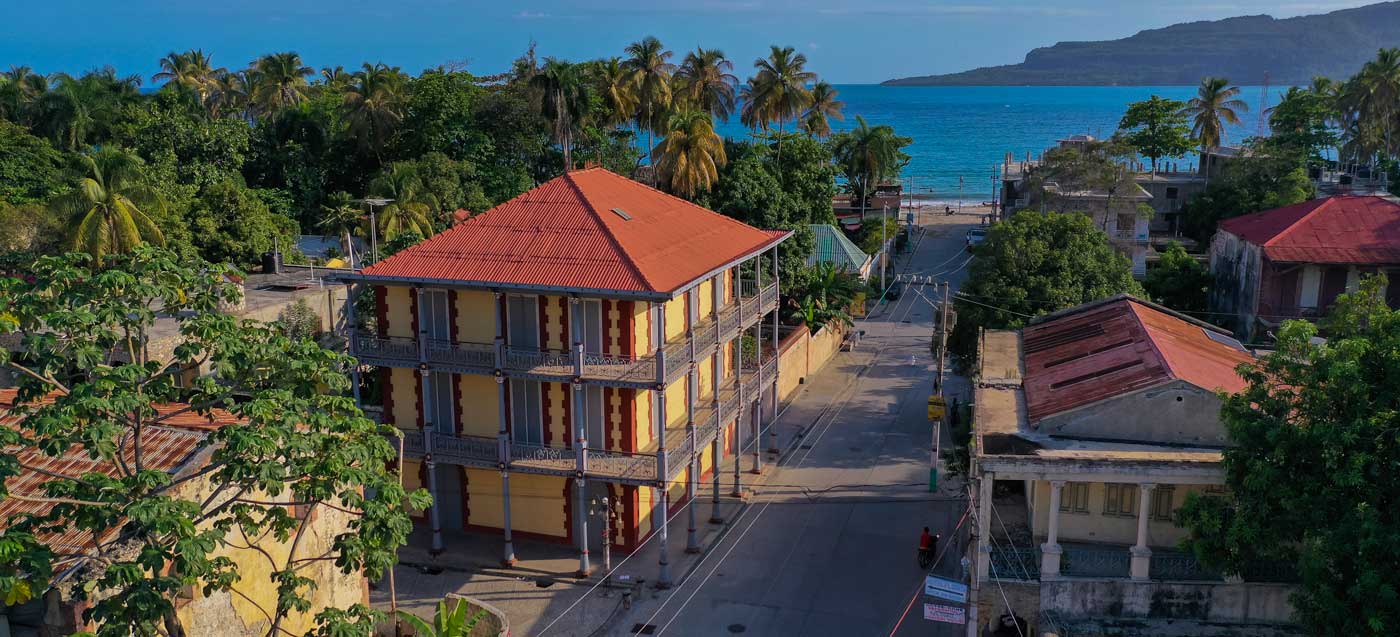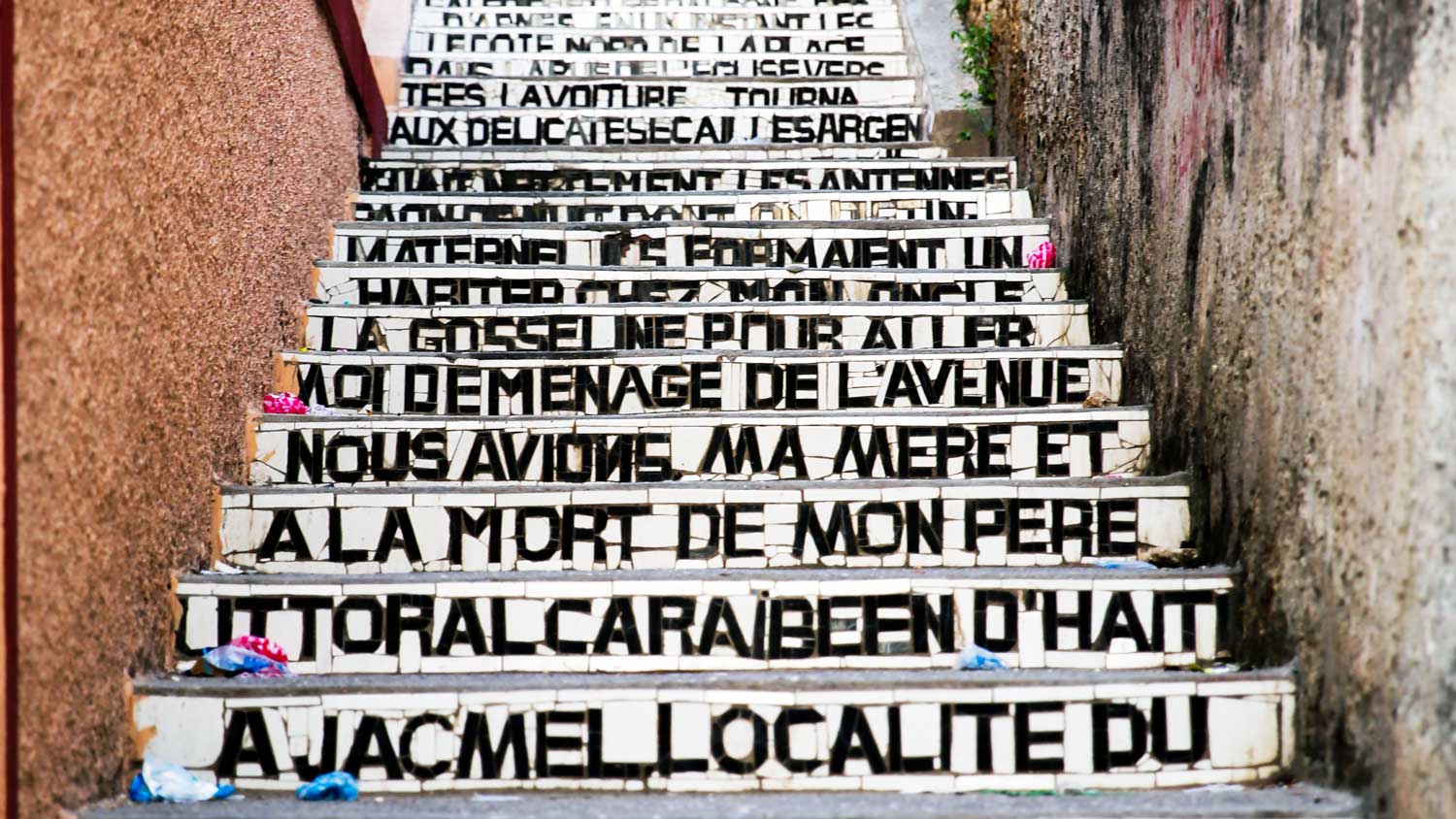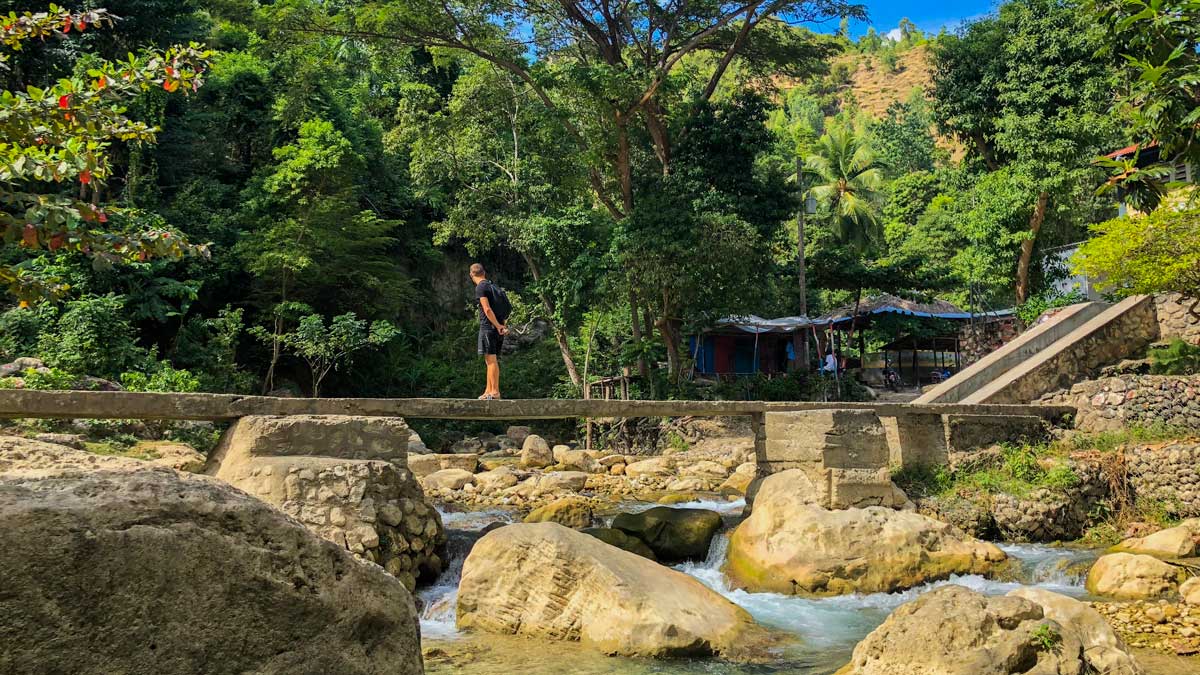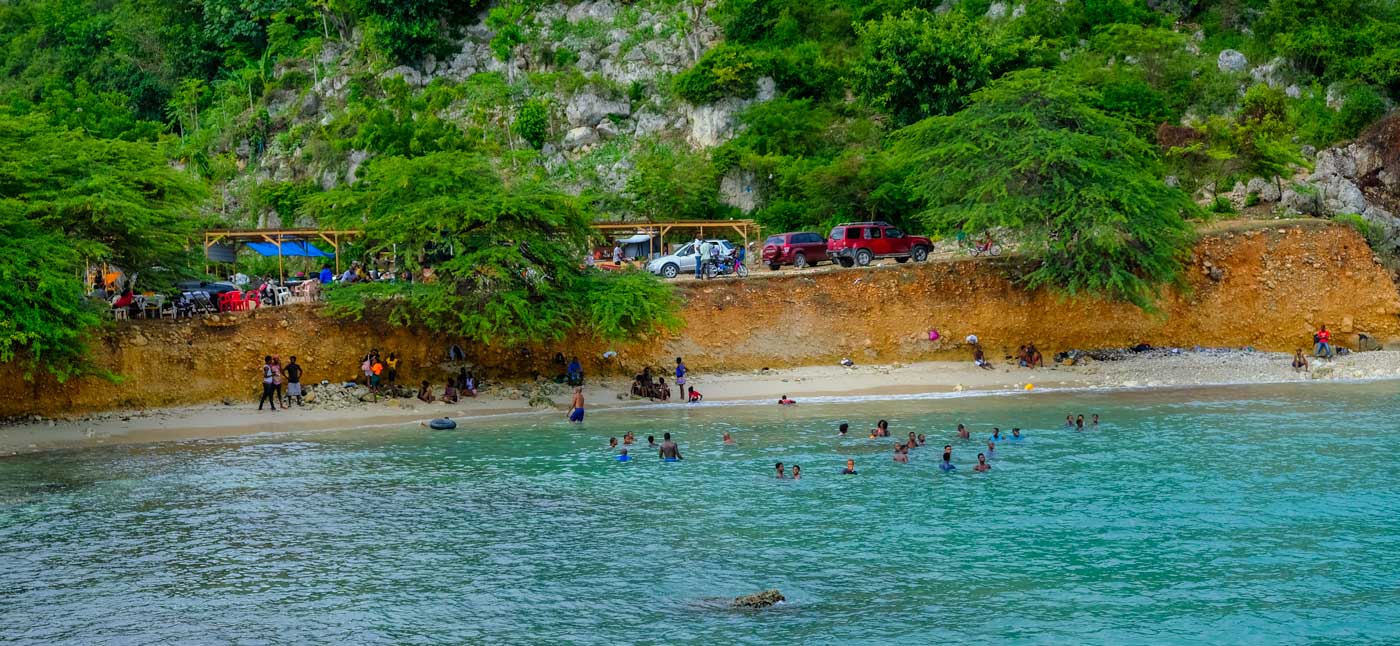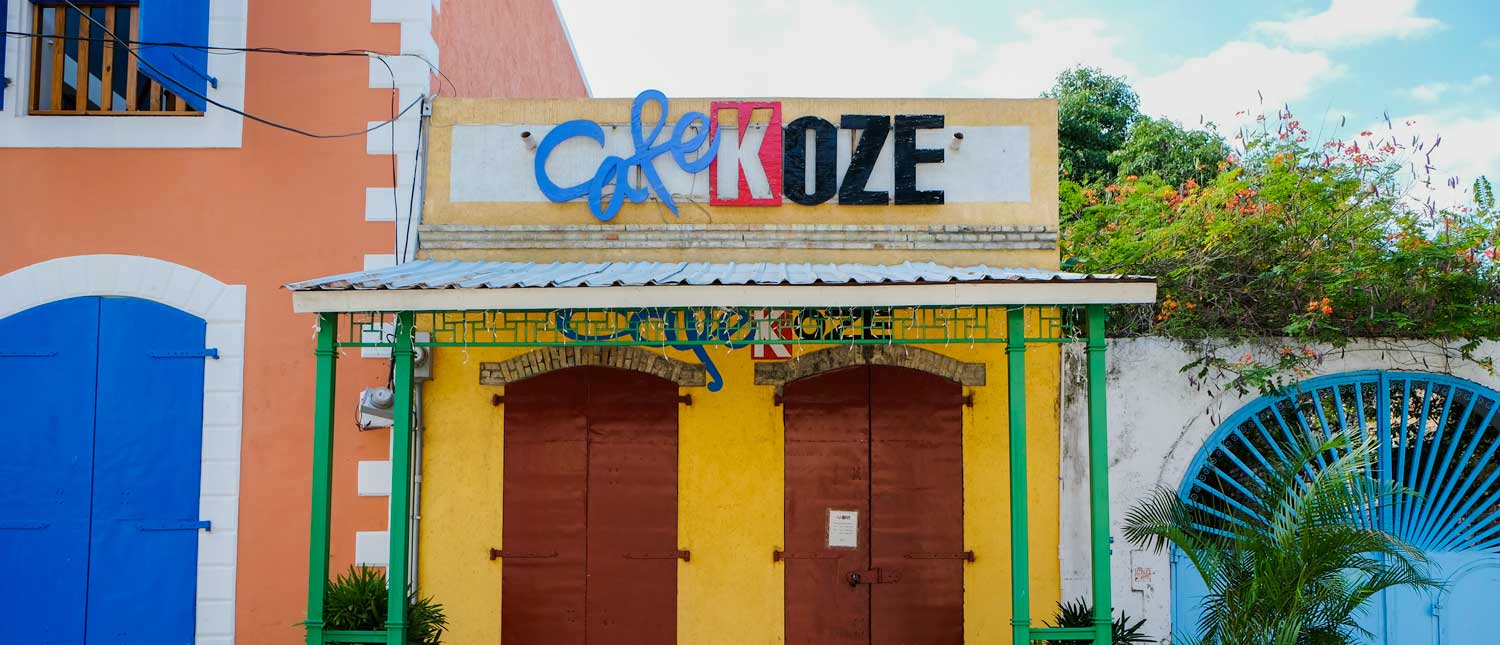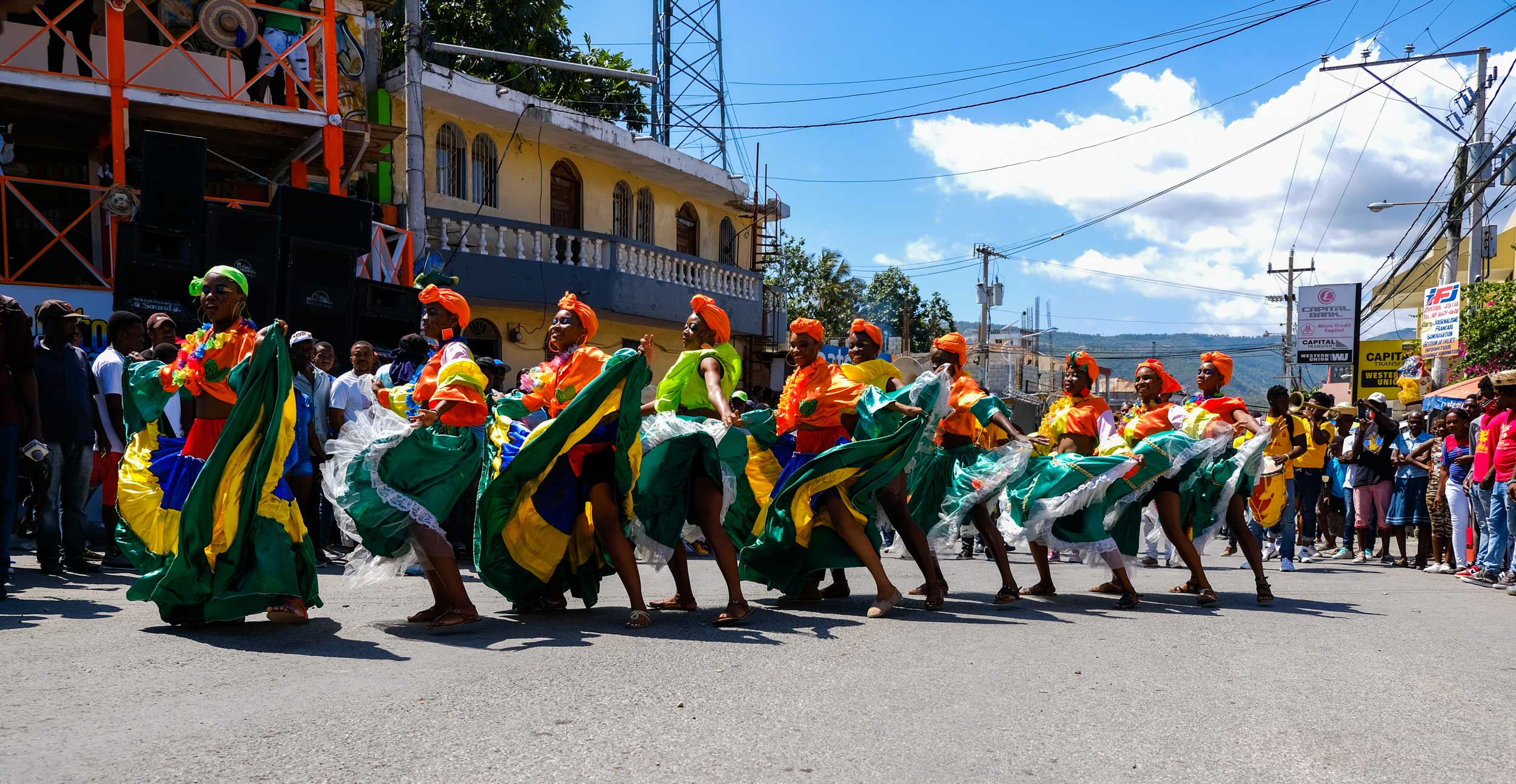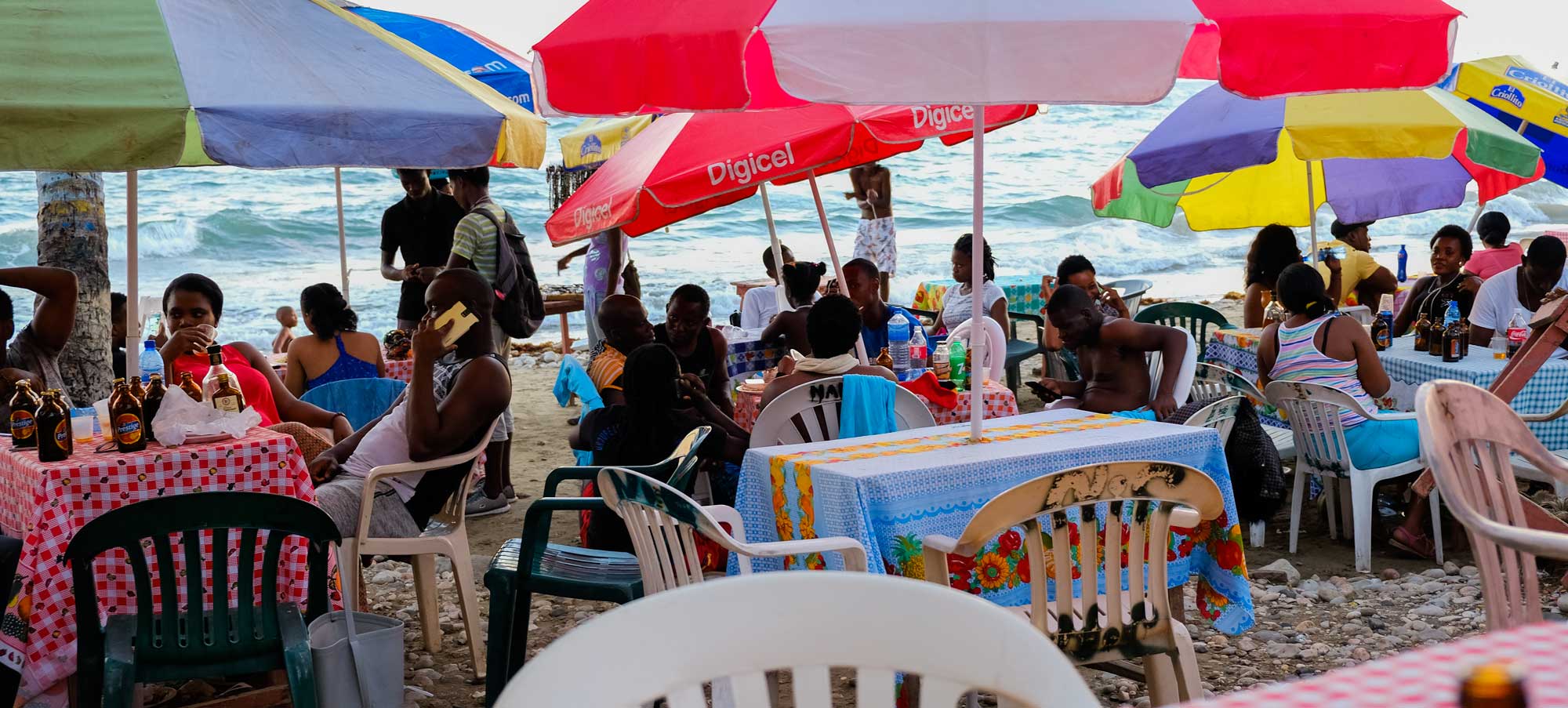
Photo: Franck Fontain
Raymond les Bains
Just a few hours’ south of Port-au-Prince, the colorful city of Jacmel is best known for its beautiful, expansive beaches. Raymond les Bains is a local favorite, and an attraction not to be missed if you’re in Jacmel. You’ll find a mile-long stretch of soft white sand, framed by palm trees and mountains in the distance.
Like most of the beaches lining Haiti’s stunning southern coast, Raymond les Bains has a nice, gradual slope into the water and soft, smooth sand. On bright, sunny days (Jacmel sees 230 a year) Raymond les Bains is a textbook example of a Caribbean paradise.
Raymond les Bains is also a popular night time attraction. There is a lot more music, more to drink, and the atmosphere is much more fit for dancing and meeting new people! If you are lucky, you might even catch a full moon reflected on the Caribbean Sea.
Don’t miss: the freshly-grilled fish
For seafood lovers, the highlight of Raymond les Bains might be the food. Grilled fish is a local specialty and the menu is teeming with options.
To order, visitors can take a seat at any table on the beach. Expect to be approached by merchants selling all sorts – gum, drinks, snacks, jewellery – but keep an eye for the waiter or waitress at the restaurant. Our top tip is to ask to see the fish before you settle on your order; different price points get you different fish; and even at a specific price point, you still get to pick from a variety of fish.
You can ask if there is a choice of accompaniment for the fish; most places offer the standard fried plantains or fried potatoes. Depending on the season, you might even find fried breadfruit – a Caribbean delicacy not to be missed. This fried tropical staple provides a crisp, savory contrast to mouth-watering freshly-grilled fish, elevating what sounds like a simple, everyday dish to a memorable island experience.
Getting there
8 miles east of downtown Jacmel, Raymond les Bains is en route to Cayes-Jacmel and Marigot.
Look out for the “Bienvenue à Raymond les Bains” signage on the right side of the road. From there, the road dips and narrows down a sandy path flanked by small houses on the left, and the sound of slow waves crashing on the beach on the right. Continue on until you reach the gate – and gatekeepers.
Because it is a public beach cleaned and maintained by the locals, Raymond les Bains is gated, and does require a small fee to enter. Expect to pay at least 100 HTG per car. Once that is taken care of, you will be asked to enter and park your car off to the side.
Written by Kelly Paulemon.
Published May 2019
Find Raymond les Bains
Explore the south of Haiti

Paradise for your inbox
Your monthly ticket to Haiti awaits! Get first-hand travel tips, the latest news, and inspiring stories delivered straight to your inbox—no spam, just paradise.




